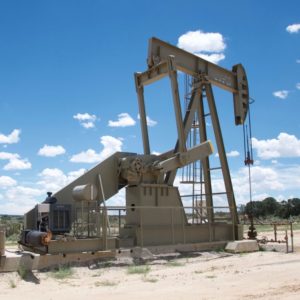Imagine New Mexico liquefied natural gas (LNG) replacing coal as fuel in China. It could happen now that New Mexico has joined the Western States and Tribal Nations (WSTN) natural gas initiative.
The fledgling WSTN — formed in April — says it will foster “economic development in the rural communities of Western States, promote tribal self-determination and improve the environment by … making cleaner fuels available to Asian energy markets.” It also seeks to help build the infrastructure to connect those U.S. natural gas sources to the export supply chain.
Bryson Hull, a spokesman for WSTN, said a number of the group’s members are in “early discussions” with several Asian nations.
“It is well known that the primary growth area for LNG — globally — in the short term, is Asia,” Hull told InsideSources, adding that the main country WSTN is aiming for is “China, because they are looking to replace a lot of their coal-fired generation.”
“Basically anywhere there is major economic growth and they are looking to industrialize their economy — but first and foremost it’s China,” Hull said, adding the group and industry are also looking at the possibility of exporting LNG to Taiwan and Vietnam.
Hull noted that the group wants to help nations that aim to rid themselves of excessive pollution.
“It’s important to remember that pollution doesn’t stop at our borders and being able to help Asian nations to use cleaner fuel — like natural gas — helps to improve the global environmental footprint,” he said.
The Ute Tribe, the lone tribe currently a WSTN member, lauded New Mexico’s membership.
“The Ute Tribal Business Committee welcomes the arrival of New Mexico, a state that understands how energy production that can support tribal self-determination and rural economic growth can exist while maintaining stewardship of our environment here and across the world,” said Shaun Chapoose of the Ute Tribal Business Committee.
New Mexico’s joining the group creates the potential for new export opportunities for the Permian Basin. WSTN is currently investigating export possibilities for the Piceance and Uinta basins in Colorado and Utah, and Wyoming’s Green River basin.
“We are proud to welcome New Mexico to Western States and Tribal Nations as we continue to advance regional and international partnerships to build new market access to sustainably meet the world’s growing demand for energy,” said Laura Nelson, the Utah Governor’s energy advisor and executive director of the governor’s Office of Energy Development. “Our strengthened collaboration will yield unparalleled outcomes for economies, environments and citizens locally and globally.”
New Mexico production for both oil and gas hit record highs in 2018, as reported by the state’s Energy, Minerals and Natural Resources Department’s Oil Conservation Division. The state’s top gas producers ended 2018 with 1.5 billion MCFs of natural gas, a 390 million MCF increase in production over the previous year. [MCF is an abbreviation derived from the Roman numeral ‘M’ for one thousand, combined with cubic feet (CF) to measure a quantity of natural gas.]
New Mexico also ranks in the nation’s top 10 natural gas producers, according to the Carlsbad Current Argus. The federal Energy Information Administration says the state has more than 4 percent of the nation’s natural gas reserves.
Southeastern New Mexico is experiencing unprecedented growth and economic activity as the oil and gas industry continues to explore the potential of the Permian Basin.
Cabinet Secretary of the New Mexico Energy, Minerals and Natural Resources Department Sarah Cottrell Propst — whose agency represents New Mexico in the WSTN — says her department is on the search for untapped markets for New Mexico’s natural gas.
“Supporting rural economic development in New Mexico is a priority for this administration and we look forward to working with this diverse coalition to find new markets for our energy,” she said in a statement.
Bryan Hassler, executive director of the Wyoming Pipeline Authority — another member of the coalition — said New Mexico was a great addition to the group as it would add natural gas reserves from the Permian Basin, and help push them to market.
“The addition of New Mexico to the Western States and Tribal Nations strengthens the alliance by aligning our mineral interests in a more unified front to promote the export of the abundant resources our states are blessed with,” he said.
Larry Behrens, western states director for Power the Future — a nonprofit that describes its mission as the support of energy workers — said his group supports the state’s WSTN membership.
“We support any effort to find new markets because New Mexico’s energy workers are among the best at delivering reliable and affordable energy while protecting our environment,” Behrens told InsideSources. “For decades, they have delivered billions in revenue to our state while proving we can have economic prosperity and a clean environment at the same time.”
WSTN was formed after the release of a report entitled “Natural Gas Markets for the Western States and Tribal Nations,” which identified the economically and environmentally transformative opportunities that will come from connecting stranded western North American gas to Asian LNG customers.

